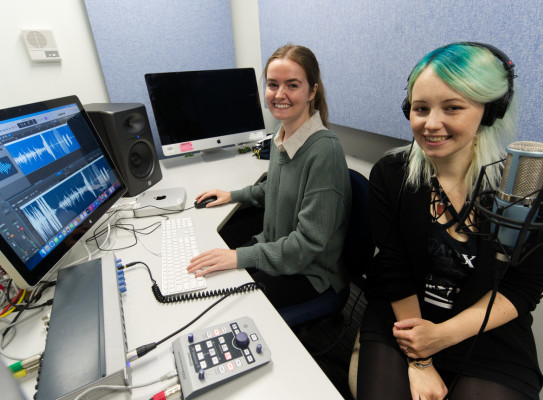Students find ways to talk about smart energy use

Smart energy use is at the centre of a joint education project between science communication students and GNS Science.
GNS Science geothermal research leader Dr Anya Seward says education around smart energy use has never been more important. “We recently connected with Nancy Longnecker, Professor of Science Communication at Otago University. We talked about some strategies of communicating smart energy use, particularly around low-temperature geothermal energy. Nancy suggested we present the task to her postgraduate Science Communication Strategies and Resources class and see what they come up with.”
Two students took up the challenge and approached the task, targeting very different audiences. The first student, Bryony Kentfield, used storytelling to engage the younger generation and get them thinking.
Bryony Kentfield created a story about a fairy living in the woods, seeking a smart and efficient way to heat her home in the winter.

I wanted to introduce geothermal heat pumps in a more subtle way, both to reach a wider audience and avoid coming across as preachy or combative. Science fiction often uses real science, so I thought, well, why not science fantasy?
Bryony explains "A lot of ‘science-y’ children’s books are very obviously about the science, right from the cover, which narrows the audience to those already interested in the topic. I wanted to avoid that. Also, I love working with rhyme."
Bryony was assisted by her father Leslie Kentfield who worked on the character artwork. Her story was inspired by the beautiful gardens and nature around Dunedin.
The second student, Rosie Cawthorne, produced an ‘ask the experts’ podcast (MP3, 13 MB) in conjunction with an easy to read and understand pamphlet, to help inform and educate decision-makers. Rosie, recipient of a Leverhulme Trust Study Abroad Studentship grant, also produced pamphlets containing information regarding geothermal (or ground-source) heat pumps that land developers, funders, and councils can refer to. She also connected with GNS’s Social Scientist Celia Wells and expert Yale Carden (Chief Executive of GeoExchange, Australia) to discuss benefits of ground-source energy for New Zealand’s low-carbon energy future.
“Whilst this technology is understood by those leading sustainable energy development, Rosie says. “It could be easily understood by many more. Once information about ground source heat pumps is more accessible, people can begin to make informed decisions about smart energy use.”
“Working with ‘real-world’ clients provides an excellent opportunity for the students,” said Nancy. “Their work can really surprise and impress me because they come at things from so many different perspectives! I was sceptical about a children’s book on geothermal energy but love the whimsical result.”
Anya says it is great to support these students on their science communications pathway.
Science is not very useful unless it is communicated well and reaches the right people in a format they can understand and comprehend. I have really enjoyed working with these students who have taken very different approaches to communicate energy science to decision makers of today and future generations.